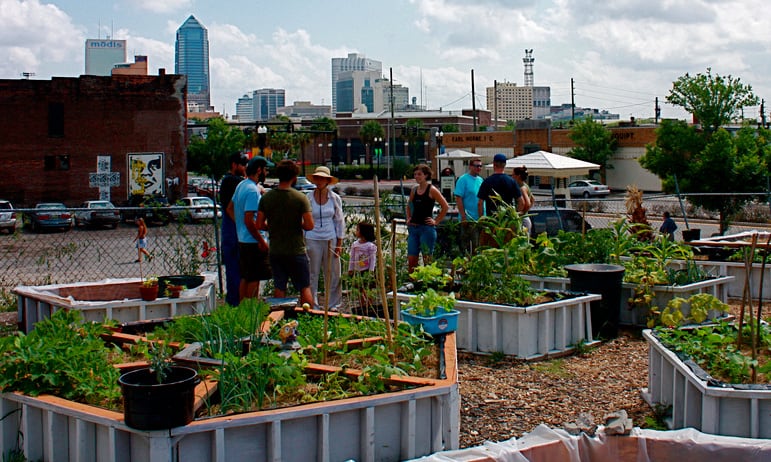City Blooming Can Be Fun For Anyone
City Blooming Can Be Fun For Anyone
Blog Article
The Definitive Guide to City Blooming
Table of ContentsThe 7-Minute Rule for City BloomingThe Ultimate Guide To City BloomingThe Single Strategy To Use For City BloomingNot known Details About City Blooming Little Known Questions About City Blooming.
Fascinated in expanding food for sale in the City of Chicago? Below is a list of frequently asked inquiries pertaining to the guidelines and laws that growers ought to consider when intending an urban farming task.
The zoning amendment does not modify any type of various other codes handling composting, building licenses, purchasing or leasing City possessed building, company licenses or environmental contamination. There are existing codes that manage these problems and they remain in full effect and might be suitable to your job. Area yards are generally had or managed by public entities, civic companies or community-based organizations and kept by volunteers.
Urban ranches grow food that is intended to be offered, either on a not-for-profit or for-profit basis. As a result of their business objective, metropolitan ranches call for a company certificate. Yes. A community garden is allowed to sell excess generate that was grown on website if the sales are accessory or subservient to the yard's key objective explained over.
The Buzz on City Blooming
Composting is permitted but just for plant product that is created and made use of on website. The amount of compost material can not surpass 25 cubic lawns at any given time according to the standards in 7-28-715 of the City's Municipal Code. Yes. Due to the fact that the soil at a lot of new yard websites needs amending, compost, soil, wood chips, or other products can be obtained to create or enhance the expanding room - home and garden.

If a building permit is needed after that the hoophouse will be thought about an accessory building. You can figure out even more concerning the building permit needs by calling the Department of Structures. The 25,000-square-foot size limit is meant to protect against a single area garden from dominating an offered block or detracting from the block's existing household or business personality.
The limitation does not use to yards found in Public Open Space (POS) districts. Can there be greater than one community yard that is 25,000 square feet on a single block? Yes. The dimension limitation uses to individual yards, not to individual blocks. No. Fence is not required, nonetheless, gardens that have large auto parking locations might be required to set up fence or other landscape design attributes.
The Main Principles Of City Blooming
B1 & B2 districts call for that all business usage activities be carried out indoors. R areas limit business task. The laws mirror the objective and intent of the Zoning Code. Is fencing required for metropolitan ranches? Yes. Fencings might be needed, in addition to landscaping and screening, for particular parking lot and outside work or storage space areas depending upon area and the particular activity occurring.
Urban farms call for building licenses and zoning approvals prior to construction (eco-friendly practices). Various other kinds of city evaluation might be called for depending on details frameworks, tasks, dimension, landscape design, licensing, public heath and stormwater management problems.
Yes. The type of permit is figured out by what is occurring at the site. The Department of Service Affairs and Customer Security can assist figure out the particular kind of company certificate that's required. Yes. Off street car parking is needed for many commercial projects in Chicago. The needed variety of parking rooms is based on the variety of workers working on site and not the square video of the expanding space.
City Blooming for Dummies

Yes. An urban ranch can market compost material generated on site, nonetheless, the operation needs to comply with the regulations in 7-28-715 of the Chicago Municipal Code. Yes. Aquaponic systems are permitted indoors on urban farms in lots of zoning areas. However, a zoning testimonial and structure authorization is called for in order to install frameworks or systems and an organization certificate is needed as described over.
Up to 5 hives or colonies of honey bees might be maintained as an accessory usage. Nevertheless, beekeepers should sign up with the Illinois Department of Farming. For more information concerning the suggested zoning modification you might call the Department of Real Estate and Economic Development, Bureau of Planning and Zoning at 312.744.8563.
Farming in cities and city areas A city ranch in Chicago. Urban agriculture refers to numerous practices of growing. https://canvas.instructure.com/eportfolios/2986028/Home/City_Gardening_A_Green_Oasis_in_the_Concrete_Jungle, handling, and dispersing food in urban locations. The term likewise puts on the location tasks of pet husbandry, aquaculture, beekeeping, and horticulture in a metropolitan context. Urban agriculture is identified from peri-urban farming, which happens in country locations beside suburbs.
Our City Blooming Statements
, who Go Here look for to develop social networks founded on a shared values of nature and area holism. These networks can create by way of official institutional assistance, ending up being integrated right into regional town preparation as a "transition community" motion for lasting urban development.
In either case, the much more straight accessibility to fresh vegetable, fruit, and meat items that might be know through urban agriculture can enhance food protection and food safety while decreasing food miles, bring about lower greenhouse gas discharges, thereby contributing to climate adjustment mitigation. Some of the very first proof of urban agriculture originates from Mesopotamia.
Report this page